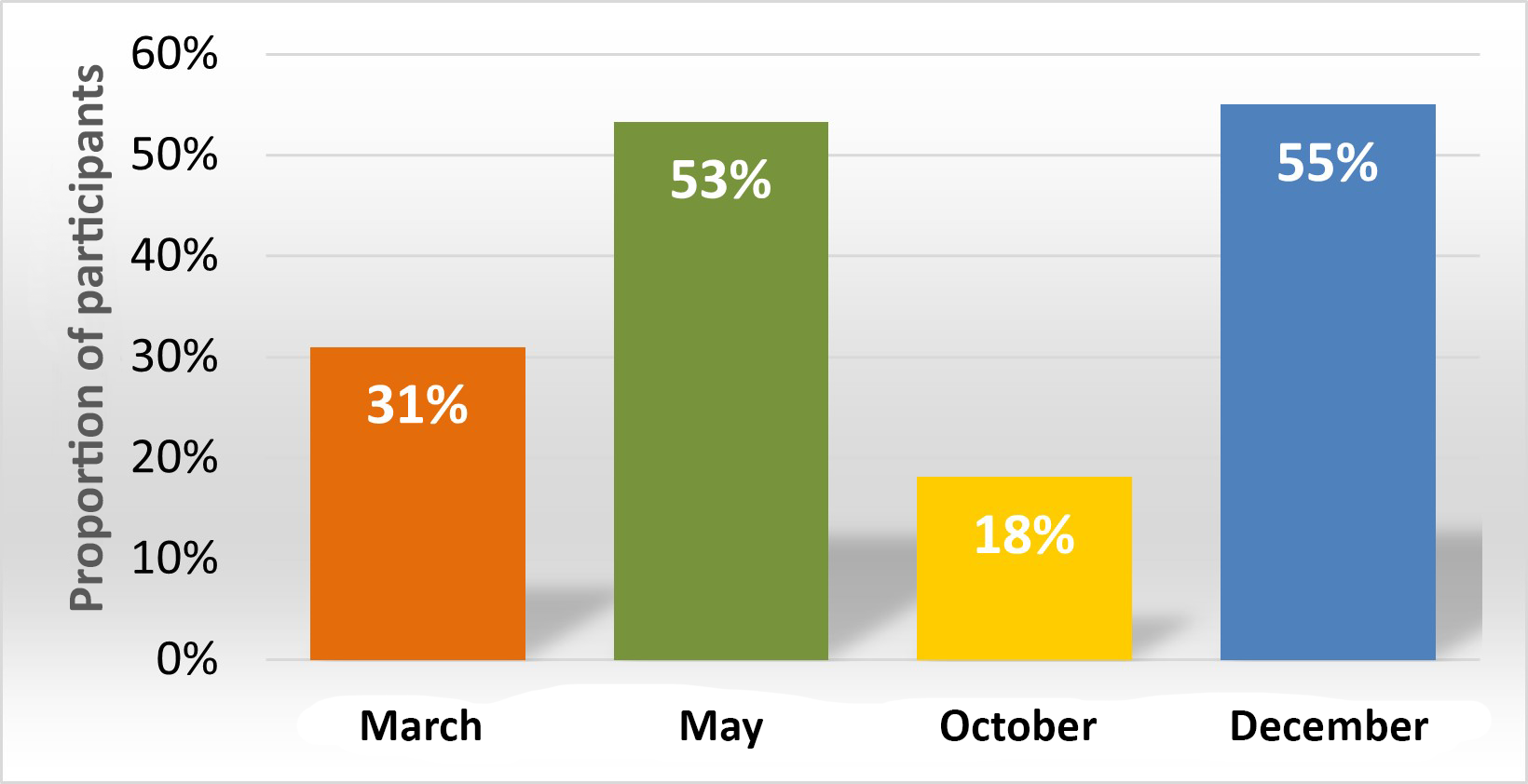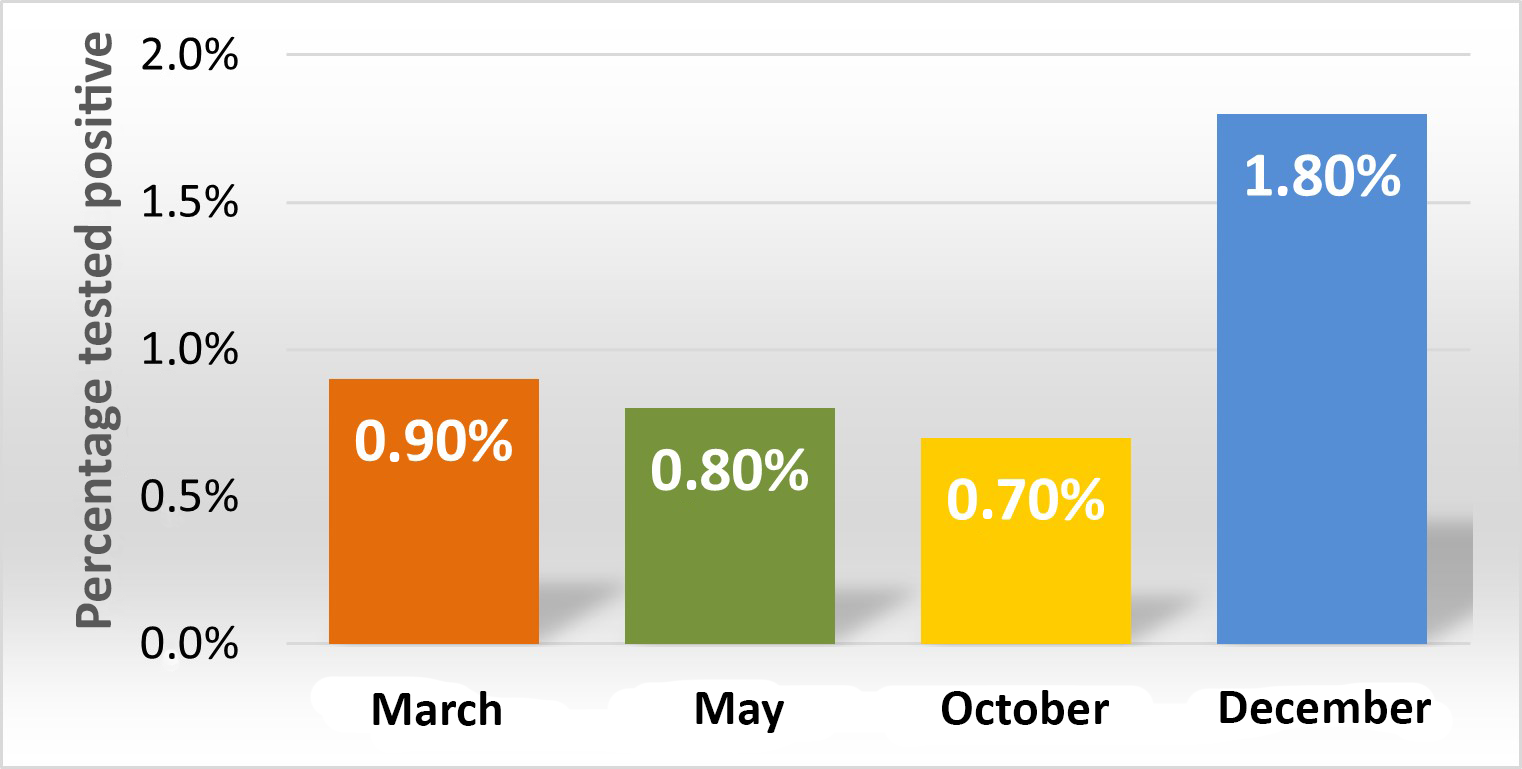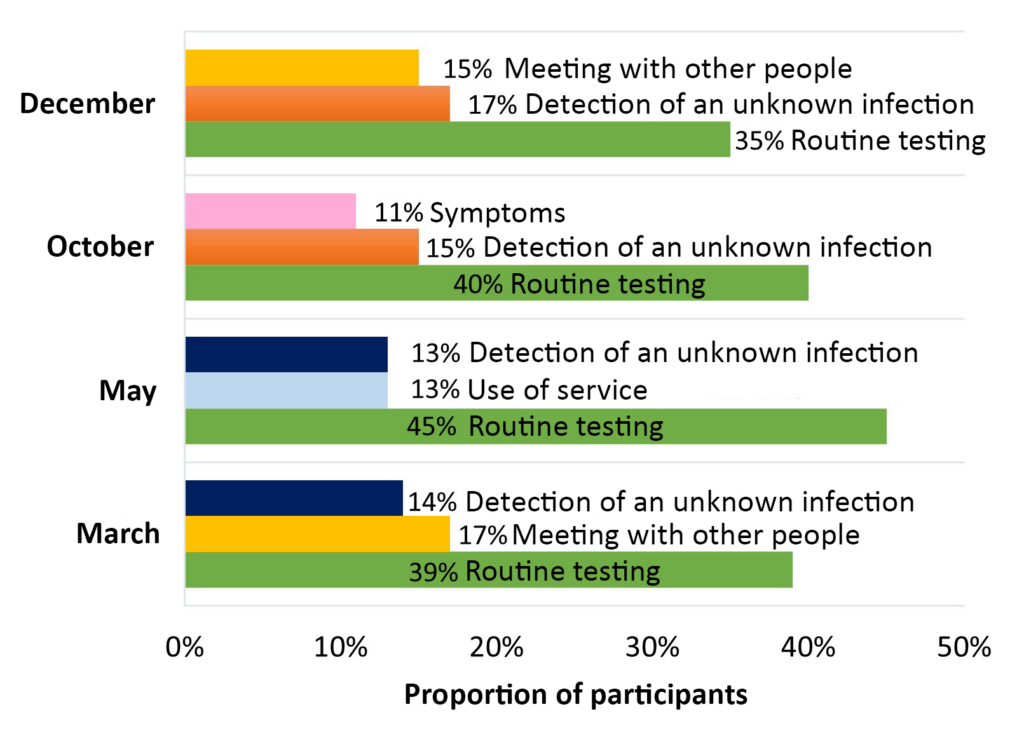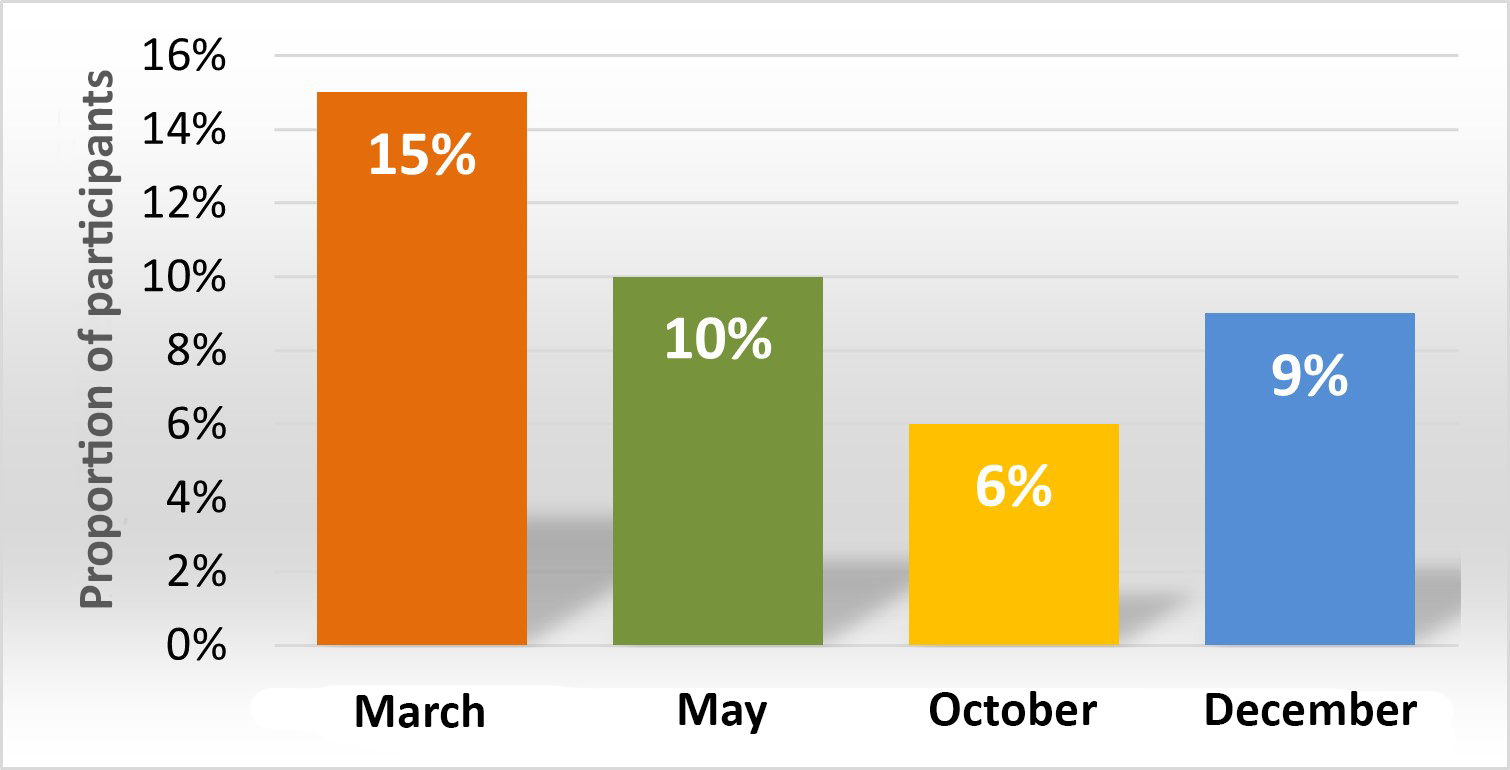At this point in time, we have conducted four surveys on the use of corona tests in different phases of the corona pandemic. We first inquired in March 2021, when rapid tests were not yet available in large enough quantities for the entire population. In May, when we asked the second time, rapid tests were already in routine use for everyday life and often available free of charge. By the third survey in October ’21, rapid tests were no longer free and the supplies for the public had been drastically reduced. We last asked about the use of corona tests in December, i.e. in the middle of the fourth wave. The availability of rapid tests once more rose sharply in comparison to the previous months. Tests were again free of charge, even if the range of offers was not as varied as in spring. Overall, 63% to 75% of contacted registerd participants of DigiHero took part in our surveys.
In the survey in March, about a third of participants stated to have tested themselves for COVID-19 within the last 7 days. In the second round of surveys in May, more than 50% of respondents reported the same. In October, however, the percentage fell to almost a fifth of participants in that survey. Then, in December 2021, again more than half of the participants stated to have made use of corona tests within the last 7 days (Fig. 1).
The lowest number of positive results, among the participants who had done at least one corona test within the last 7 days, was in October 2021 at about 0.7%. Contrarily, the highest number of positive tests was in December with a proportion of 1.8% (Fig. 2).
The most frequently cited reason for getting tested was the routine testing implemented by employers. The reason often following behind were meeting other people, utilization of certain services, as well as discovering symptoms of an unknown infections (Fig. 3).
Additionally, we inquired who of the participants considered to get tested but ultimate did not and the reason why not.
The portion of people answering this question with “yes” fell from 15% in March to 6% in October before rising again in December to about 9% (Fig. 4). The main cause in March was the lack of sufficient testing facilities. In the following surveys, the reason cited most frequently was that these participants considered the probability of being infected by SARS-CoV-2 to be low.







